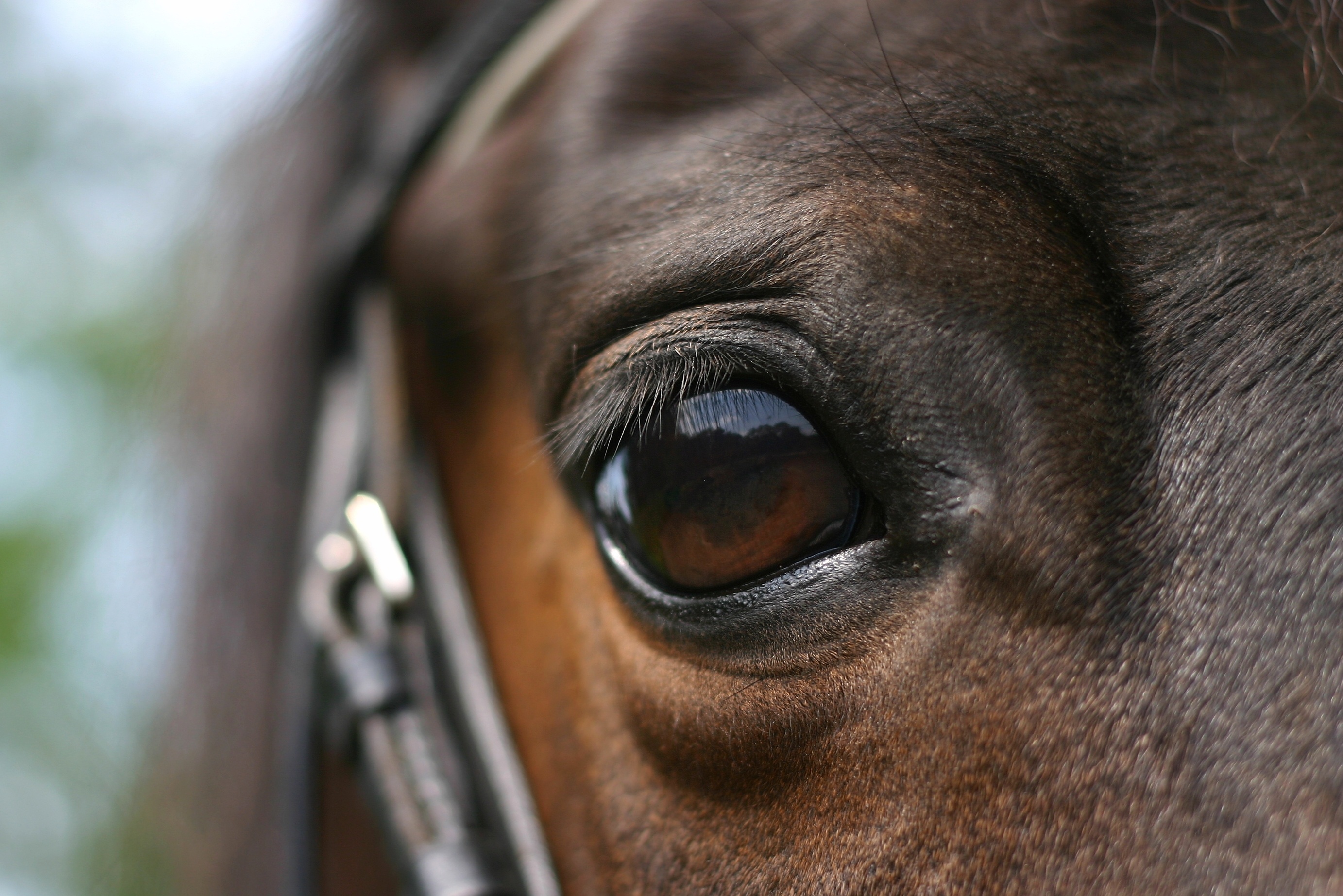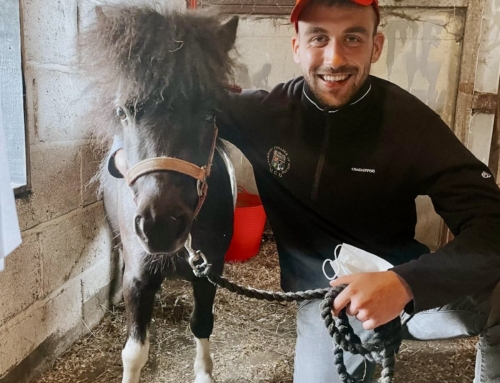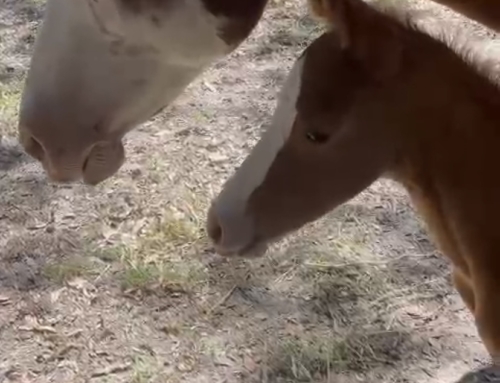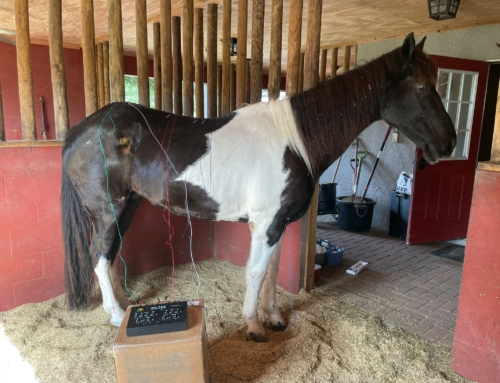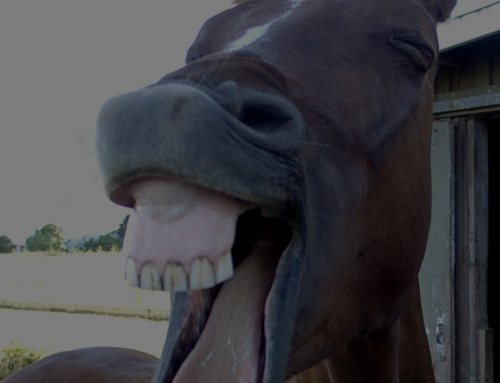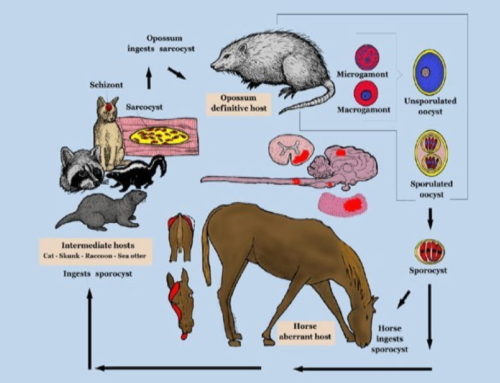Equine Eye Trauma and Emergencies
Due to the location of their eyes on their head, horses are especially prone to eye trauma. Any eye trauma requires immediate veterinary attention. Clinical signs of eye injury include:
- Squinting
- Swelling/redness/painful eyelids
- Tearing
- Color change within the eye
- Head shaking/sensitivity to light
- Eyelid trauma
Signs of eyelid trauma are usually very obvious, and the affected eyelids tend to swell greatly. The eye should be examined closely by a veterinarian to assure no trauma has occurred to the underlying ocular structures. For lacerations (cuts) to the eyelid, the laceration should immediately be sutured to ensure future eyelid function.
Corneal Ulceration
Corneal ulceration is trauma to the outermost layer of the eye, the cornea. The cornea is an extremely sensitive structure, and most horses have a very painful eye with clinical signs of squinting and tearing. If the ulcer is large or deep enough, you may be able to visualize the ulcer with the naked eye. Upon evaluation, your veterinarian will closely inspect the ulceration to try to determine its cause. In addition, the veterinarian will evaluate the deeper structures within the eye. A fluorescein stain is used to determine the depth and size of the ulcer. If left untreated, corneal ulcers may become large or deep enough to cause the eye to rupture. In Florida, we are especially worried about corneal ulcers becoming infected with fungus. It is extremely important to not treat a corneal ulcer with steroids, as that can worsen the ulcer and cause a melting ulcer. Your veterinarian will use a variety of topical medications to treat the corneal ulceration. If the ulcer is severe or if the horse is difficult to treat, a subpalpebral lavage system (SPL) may be placed to ensure adequate treatment.
Equine Recurrent Uveitis (Moonblindness)
Equine Recurrent Uveitis (ERU) is one the leading causes of blindness in horses. ERU is an immune-mediated disease, meaning that the body’s immune system attacks its own tissue in the eye. Uveitis is any inflammation in the eye. At this time, the exact cause of the disease is unknown. Appaloosas, paint horses, draft breeds and warm bloods are at higher risk for developing ERU. One or both eyes can be affected, and frequently the horse has reoccurring bouts of uveitis. Eventually, recurrent uveitis can cause permanent damage to the inner structures within the eye and ultimately blindness. Clinical signs include squinting, tearing, sensitivity to light, a bluish tint/cloudiness to the cornea, and a small pupil. It can be extremely difficult to diagnose ERU, as your veterinarian must rule out other causes of uveitis. At this time, there’s no cure for ERU. The mainstay of treatment involves decreasing inflammation within the eye, in order to protect inner structures from permanent damage. Current treatment includes topical and/or systemic steroids, cyclosporine implants, and acupuncture.

